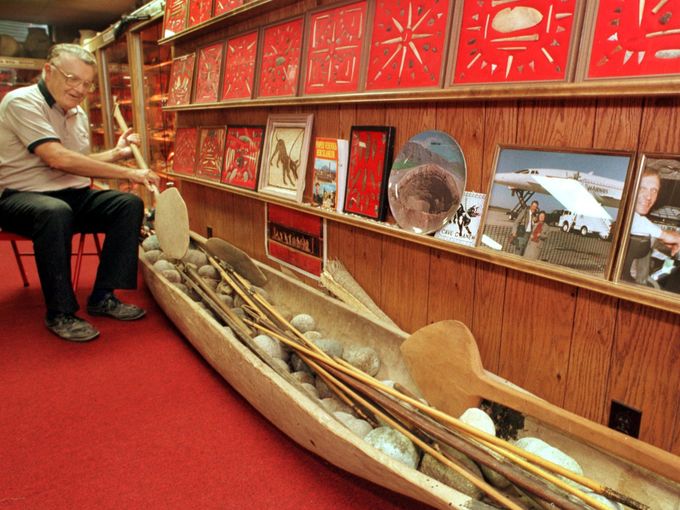
Donald Miller, a collector who was something of a real-life Indiana Jones, died last week at age 91, reports the Indy Star. He had come under close scrutiny over the past year, as the FBI had raided his Indiana home, seizing thousands of cultural artifacts in the hope of repatriating them to their native countries.
Miller’s death comes almost exactly a year after the FBI’s art crime team surrounded his rural Indiana home and took away his massive collection. Despite the dramatic seizure, which was filmed by television helicopters, charges were never filed against Miller, who maintained he was the rightful owner of the artifacts.
His interest in archaeology began as a young boy, when Miller would find arrowheads on his family farm. As an adult, he was an adventurous globetrotter: “I have been in 200 countries collecting artifacts,” Miller told CBS last year.
In addition to Native American artifacts from the United States, Miller’s collection features objects from countries including Haiti, Australia, New Guinea, New Zealand, Peru, China, Russia, Italy, and Greece.
Among Millers treasures are Aztec figurines, Ming Dynasty jade, and an Egyptian sarcophagus. “I have never seen a collection like this in my life except in some of the largest museums,” Indiana University-Purdue University Indianapolis professor of anthropology Larry Zimmerman told the Star.
“The monetary value of the entire collection and of its individual pieces is yet to be determined; however, the cultural value of these artifacts is immeasurable,” claimed FBI special agent in charge Robert Jones in a statement last year.
At the time of the seizure, the FBI stated that the collection was well-cared for, despite not being stored up to museum standards.
In remains unclear how the FBI investigation began, but Miller was suspected of violating treaties and state and federal statues while amassing his collection. Repatriating the objects, however, is complicated by the fact that many artifacts may have been acquired before such laws went into effect.
The process of cataloging Miller’s impressive holdings is a daunting one, and is expected to take a team of over 200 people at both the Bureau and the anthropology department at Indiana University-Purdue University Indianapolis many years to complete.
Miller’s death will only hinder such efforts. “Without his help, it’s just going to be enormously difficult to figure out which ones he legitimately purchased, which are legal and which ones aren’t,” attorney David B. Smith, an expert in asset forfeiture, told the Star. “It’s a huge problem.”
For more artnet News coverage of art collections with controversial origins see:
Picasso’s Electrician, Pierre Le Guennec, Found Guilty, Must Return Paintings
Important Monet Found Among Gurlitt’s Nazi-Era Art Trove, Valued at $13 Million
Is This Greek Hoarder the Cornelius Gurlitt of Ancient Coins?